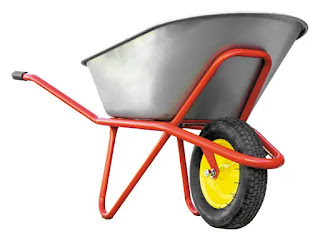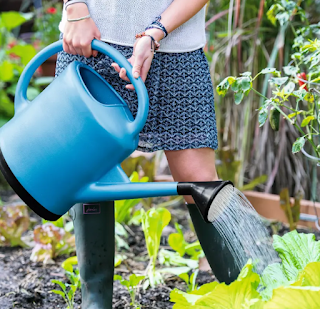Every gardener, from the budding enthusiast to the seasoned green thumb, knows the feeling: you're out in the garden, dirt under your nails, sun on your face, and then you hit a snag. A stubborn weed, compacted soil, or a plant that needs just the right touch. This is where the right tools come in.
Having the proper equipment isn't about accumulating gadgets; it's about making your gardening more efficient, more enjoyable, and ultimately, more successful. The right tool can save your back, protect your hands, and turn a tedious chore into a satisfying accomplishment.
Forget endless trips to the shed or wrestling with inadequate implements. We've compiled a list of 10 must-have garden tools that aren't just useful, they're transformative. These are the workhorses, the unsung heroes that will truly elevate your gardening experience and help you achieve your garden goals.
The Foundational Five: Every Gardener Needs These
Let's start with the absolute essentials. If you're building your toolkit from scratch, these are the first items to invest in.
 |
| Hand Trowel |
1. Hand Trowel: Your Go-To for Planting & Potting
The humble hand trowel is arguably the most frequently used tool in any gardener's arsenal. It's versatile, compact, and indispensable for countless tasks.
- Why it's transformative: A good quality trowel makes planting seedlings, transferring plants, digging small holes for bulbs, and working with potting mix incredibly efficient. Look for one with a sturdy, rust-resistant blade (stainless steel or forged steel are excellent) and a comfortable, ergonomic handle that fits well in your hand. Avoid flimsy plastic ones; they'll quickly break.
- Key features to look for: A strong, one-piece construction (avoid handles that are simply glued on), a sharpened edge for easier digging, and a hanging hole for storage.
Often called secateurs, a pair of sharp, high-quality hand pruners are essential for maintaining plant health and shape. They're used for deadheading flowers, snipping herbs, light pruning of shrubs, and harvesting fruits and vegetables.
- Why it's transformative: Clean cuts heal faster, reducing the risk of disease. Trying to break stems by hand or use dull scissors can tear plant tissue, leading to stress and susceptibility to pathogens. Bypass pruners (where the blades "bypass" each other like scissors) are generally preferred for living plant material as they make cleaner cuts than anvil pruners (where a blade closes onto a flat anvil).
- Key features to look for: A comfortable grip, sharp hardened steel blades, a safety lock, and an easy-to-clean design. Keep them sharpened and oiled for best performance.
3. Garden Fork: The Aerator & Soil Mover
Not just for pitching hay! A sturdy garden fork (or digging fork) is invaluable for breaking up compacted soil, aerating lawns, turning compost, and lifting root crops without damaging them.
- Why it's transformative: It makes light work of heavy tasks. Trying to break up hard soil with a shovel is exhausting and less effective. The tines of a garden fork penetrate dense soil with less effort, making it easier to incorporate amendments or prepare new beds. It's also excellent for gently loosening root-bound plants for transplanting.
- Key features to look for: Strong, forged steel tines that won't bend, a long handle for leverage, and a comfortable D-handle or T-handle grip.
Whether you prefer a traditional garden spade (with a flat, sharp edge) or a rounded shovel, this is your primary tool for digging holes, moving soil, transplanting larger plants, and edging beds.
- Why it's transformative: It provides the leverage and blade strength for bigger digging jobs. Trying to plant a tree or create a new garden bed without one is almost impossible. A sharp edge on your spade makes slicing through roots and compacted soil significantly easier.
- Key features to look for: A strong, sturdy shaft (fiberglass or hardwood), a comfortable footrest on the blade for leverage, and a robust blade material.
5. Garden Hose with Adjustable Nozzle: The Lifeline
Water is life in the garden, and a reliable garden hose paired with an adjustable nozzle is your irrigation lifeline.
- Why it's transformative: Efficient and targeted watering is crucial. A good nozzle allows you to switch between a gentle shower for seedlings, a strong jet for cleaning, and various sprays for established plants, minimizing water waste and preventing damage. Investing in a good quality, kink-resistant hose saves you endless frustration.
- Key features to look for: Durable, kink-resistant hose material (rubber or hybrid polymer), solid brass or heavy-duty plastic fittings, and a multi-pattern adjustable nozzle that's easy to operate.
The Next Tier: Elevate Your Efficiency & Comfort
Once you have the basics, these tools will enhance your gardening comfort and tackle more specific tasks.
 |
| Weeding Tool |
6. Weeding Tool (Hoe or Specialized Weeder): Conquer Those Intruders
Weeds are the bane of every gardener's existence, competing with your plants for water, nutrients, and light. A dedicated weeding tool is a game-changer for staying on top of them.
- Why it's transformative: Manual weeding is back-breaking. A good hoe (like a stirrup hoe or a Dutch hoe) allows you to slice weeds off at the root level quickly and efficiently, often while standing. For spot weeding, specialized tools like a "dandelion weeder" or a hori-hori knife can extract tap-rooted weeds with precision.
- Key features to look for: Sharp blades, comfortable handle length that matches your height, and durability. Experiment with different types of hoes to find what works best for your garden style.
 |
| Garden Gloves |
7. Garden Gloves: Protect Your Hands (and Your Investment)
Your hands are your most important gardening tools, and they deserve protection! A good pair of garden gloves will shield you from thorns, blisters, dirt, and potential irritants.
- Why it's transformative: They prevent injury and make gardening more pleasant. Finding gloves that fit well and offer good dexterity is key. You might want different types: sturdy, thorn-proof ones for pruning roses, and thinner, breathable ones for delicate tasks like transplanting seedlings.
- Key features to look for: Durable material (leather, synthetic blends), comfortable fit, good grip, and appropriate protection for the tasks you'll be doing.
 |
| Wheelbarrow |
8. Wheelbarrow or Garden Cart: Haul with Ease
Moving bags of soil, compost, mulch, harvest, or garden debris can be exhausting. A wheelbarrow or a garden cart is an indispensable aid for transporting heavy loads.
- Why it's transformative: It saves your back and multiple trips! A good wheelbarrow distributes weight efficiently, making heavy loads manageable. Garden carts, with their four wheels and often dump features, can be even more stable and versatile for very heavy or bulky items.
- Key features to look for: Sturdy construction (steel frame), puncture-resistant tire(s) (pneumatic for rough terrain, solid for smooth), and a balanced design. Consider capacity based on your typical needs.
9. Rake (Bow Rake or Leaf Rake): Leveling & Clearing
You'll likely need two types of rakes: a bow rake for leveling soil, spreading mulch, and breaking up clods, and a leaf rake (or fan rake) for clearing leaves and light debris.
- Why it's transformative: A bow rake is essential for preparing seedbeds and creating a smooth, even surface. A leaf rake makes autumn cleanup a breeze and is surprisingly useful for gently gathering light prunings. Trying to do these tasks by hand or with a shovel is inefficient.
- Key features to look for: Sturdy head and handle for a bow rake; flexible, durable tines for a leaf rake.
 |
| Watering Can |
10. Watering Can: For Precision & Delicate Watering
While a hose is great for larger areas, a watering can offers precision and control, especially for newly planted seeds, delicate seedlings, or container plants.
- Why it's transformative: It allows for gentle, controlled watering that won't dislodge tiny seeds or compact the soil around tender roots. A long spout and a fine "rose" (sprinkler head) attachment are ideal for even water distribution. It's also perfect for applying liquid fertilizers or compost tea.
- Key features to look for: Durable material (plastic or galvanized metal), comfortable handle, good balance when full, and a removable rose for versatility. Choose a size that's easy for you to lift when full.
Investing in Quality: A Final Word
When it comes to garden tools, quality truly pays off. Cheap tools often break quickly, rust easily, and make gardening harder than it needs to be. Investing in well-made, durable tools might cost a bit more upfront, but they will last for years, perform better, and make your gardening experience far more enjoyable.
Care for your tools: clean them after each use, sharpen blades regularly, and oil wooden handles. This simple maintenance will extend their life and keep them performing at their best.
With these 10 must-have garden tools in your shed, you're not just equipped; you're empowered. Get ready to tackle every garden task with confidence, ease, and a newfound passion for your outdoor haven. Happy gardening!






